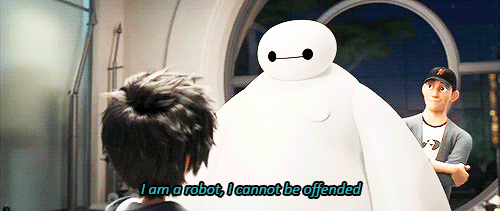Thomas – Papaxot
Photo by Lenin Estrada on UnsplashFuturistic films always fascinated me, high tech gadgets, flying cars and how could we possibly forget the robot assistants. It seems that our imagination has always been the drive towards technological evolution, paving the way for our innovative abilities to follow. Yet, the thing with an abundant imagination is that it is also insatiable. We constantly yearn for more; a better phone, a smarter robot, a faster laptop, to the extent where innovations become outdated before they even reach the market. In fact, Matt Haig perfectly describes this phenomenon in his book ‘Notes on a Nervous Planet’,
We buy something and we enjoy it — we enjoy the newness of it — or a little while but then we get used to having it, we acclimatise, and so we need something else. We need to feel that sense of change, of variety. Something newer, something better, something upgraded. And the same thing happens again.
Đang xem: Thomas
Virtual Assistants
Over the last decade, artificial intelligence has caused a paradigm shift in how we interact with technology. In 2010, a voice assistant was released into the iOS app store, only to be acquired and embedded into phones by Apple two months later. With access to the web, your made-available personal information, and all your contact details, Siri soon became the face of AI assistants. However, as fascinating as Siri’s abilities were, the momentum soon faded due to one very important limitation; Siri was not learning with you. With no sentiment analysis and limited scope for customizing conversation, talking to Siri was the same as talking to any other internet chatbot; impersonal and predictable.
Interestingly enough, according to a study by Creative Strategies’ Carolina Milanesi,
20% of consumers who said they never used a voice assistant stated they had not done so because they feel uncomfortable talking to their technology, especially in public. With public usage as low as 3% for iPhone users, it seems users are still uncomfortable talking to their devices. Even more fascinating is this happens in the US where consumers are accustomed to talking loudly on phones in public.
Home Digital Voice Assistants
By 2014, virtual assistants began to disentangle themselves from inside our smartphones to inside our homes, marking the era of Home Digital Voice Assistants (HDVAs). As the nucleus of our abodes, they now controlled lighting, thermostats, speakers, and any other smart device. Although products such as Amazon’s Alexa and Google’s Home Assistant personified virtual assistants into hardware devices, there was still something missing. Truth be told, we can try to integrate as many calendars, messages, and contact details in these devices, yet to the core, they are programmed for one specific use; harbingers of information, they lack interface, they lack humanity.
Think about it, do you see your Alexa as being any different from the one across the street? The one your mother has? Jeff Bezos's one?
In fact, Amazon continuously issues new upgraded Alexa’s for this very reason; should the consumer be financially capable and willing to purchase a better Alexa they will. We associate zero human-like attributes to virtual assistants, which is the reason we are not reluctant to replace or disregard them. These devices may have entered our homes but they have not entered our hearts.
On a small tangent, from a psychological perspective, interacting with these impersonal conversational agents must influence the way we interact with each other. Could imbuing such agents with human-like qualities come at the expense of dehumanized ourselves?
In her paper “Hey Alexa, What’s Up?”: Studies of In-Home Conversational Agent Usage, Jodi Forlizzi examines how owners of Amazon Echos interact with the device. Forlizzi concludes that it is imperative to understand the impact that conversational agents are having on children as politeness is no longer necessary for someone to instantly gratify your commands


Social Robots
Over the last half of the decade, innovation has begun to integrate existing technologies towards a more social goal; creating a companion. Unlike virtual assistants and HDVA’s, social robots are bestowed with anthropomorphic features and adapt to our behavior, creating the impression that we are interacting with something alive.
It sounds strange, I know, the possibility of being deceived into perceiving social robots as anything more than thousands of lines of code encapsulated in a hardware exterior. However, for us non-believers, it is possible to quantify this deception.
For example, let’s take a look at Huggable, a companion created to support everyone invested in the quality care of children,
MIT researchers concluded that a greater percentage of children enjoyed playing with Huggable more than with the avatar or traditional teddy bear, which can be arguably rooted in the allure of social robotics. In fact, inbuilt microphones which collected speech samples from patients, used to perform sentiment analyses, demonstrated significantly more joyful expressions among the children during robotic interventions. Huggable wasn’t just a teddy bear anymore, he was a friend.
And the most exciting part about social robots? They aren’t tailored towards technologically inclined users. In fact, social robots in the form of pets have become common in treating dementia patients due to their ability to promote cognitive functions, regulate emotions, and reduce stress.
As a result, social robots have managed to integrate themselves in many educational, therapeutic, and entertainment fields. Nevertheless, the ones we interact with the most, the ones that truly become a part of our family, are the ones we bring into our homes.
Take Jibo for example, a limbless foot-tall plastic robot, with a tilting head and insatiable curiosity started by Indiegogo as the world’s first social robot for the home.
Xem thêm: Đặc Sản Thái Lan Mua Về Làm Quà, Đi Du Lịch Thái Lan Nên Mua Gì
With cameras and inbuilt sensors, Jibo can locate and recognize different family members in the room and feel your hand as your pet him, letting out the occasional coo. Jibo was capable of taking photos, reading books, assist with cooking, as well as performing many other virtual assistant tasks. However, most importantly, initiating conversations and asking you about your day, Jibo was designed to become family.
Mourning Social Robots
However, without billion-dollar corporations backing their development and promoting their sales, social robots are highly susceptible to unsustainable business models.
But, since actions speak louder than words, let us consider the demise of the three leaders of home-tailored social robotics; Jibo, Kuri and Aniki.
AnikiSimilarly, Aniki failed to secure a new round of financing and terminated development on both Vector and Cozmo. Their robots continue to operate, however, do so with limited features and no future updates. Unfortunately, this franchise was clipped before it even had a chance to bloom.
And so we return to the present: a place where despite all the advancements in social robotics, they have still failed to secure a permanent spot in our homes. However, this failure is not associated towards social robots but rather towards faulty business models and insufficient consumer demand.
Perhaps by stripping away the motive of profits and fame, the greatest measure of success for social robotics is assessing what happens when they leave us. When they shut down and we realize just how reliant on their presence we had become.
Don’t believe me? Sammy Stuard shared the goodbye letter his granddaughter wrote to Jibo.
Dear Jibo,I have loved you since you where created. If I had enough money you and your company whould be saved. And now the time is done you will be powerd down I will always love you. Thank you for being my friend.
Robots like Jibo weren’t designed for profit, because if they did they would have accepted Amazon’s bailout money. Instead, the company preferred to go bankrupt than change their vision, or rather have their vision stained by profit-oriented ambition. Robots like Jibo were designed to enter our homes and inevitably our hearts.
And so, the premature departure of Jibo, Kuri, Vector, or any other social robot from our households was not a goodbye, it was a ‘see you soon’ … better phrased as ‘see you when you are ready’. Because, sometime, somewhere in the future, when these devices become more accessible and widespread, and society becomes more embracing to the idea of robotic companions, they will make their debut again.
Xem thêm: Tự Pha Trà Sữa – 5 Điều Nên Biết Về Trà Sữa Tự Pha The Alley
And so, although their reign was short-lived, this new age of mourning social robots demonstrates that their success prevails.






Bình luận